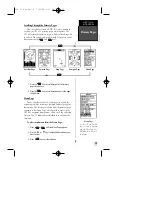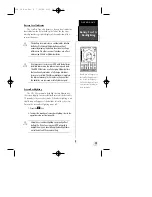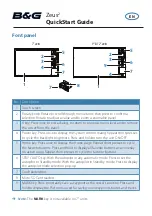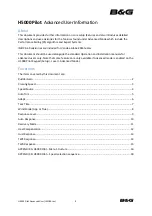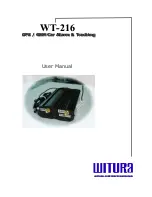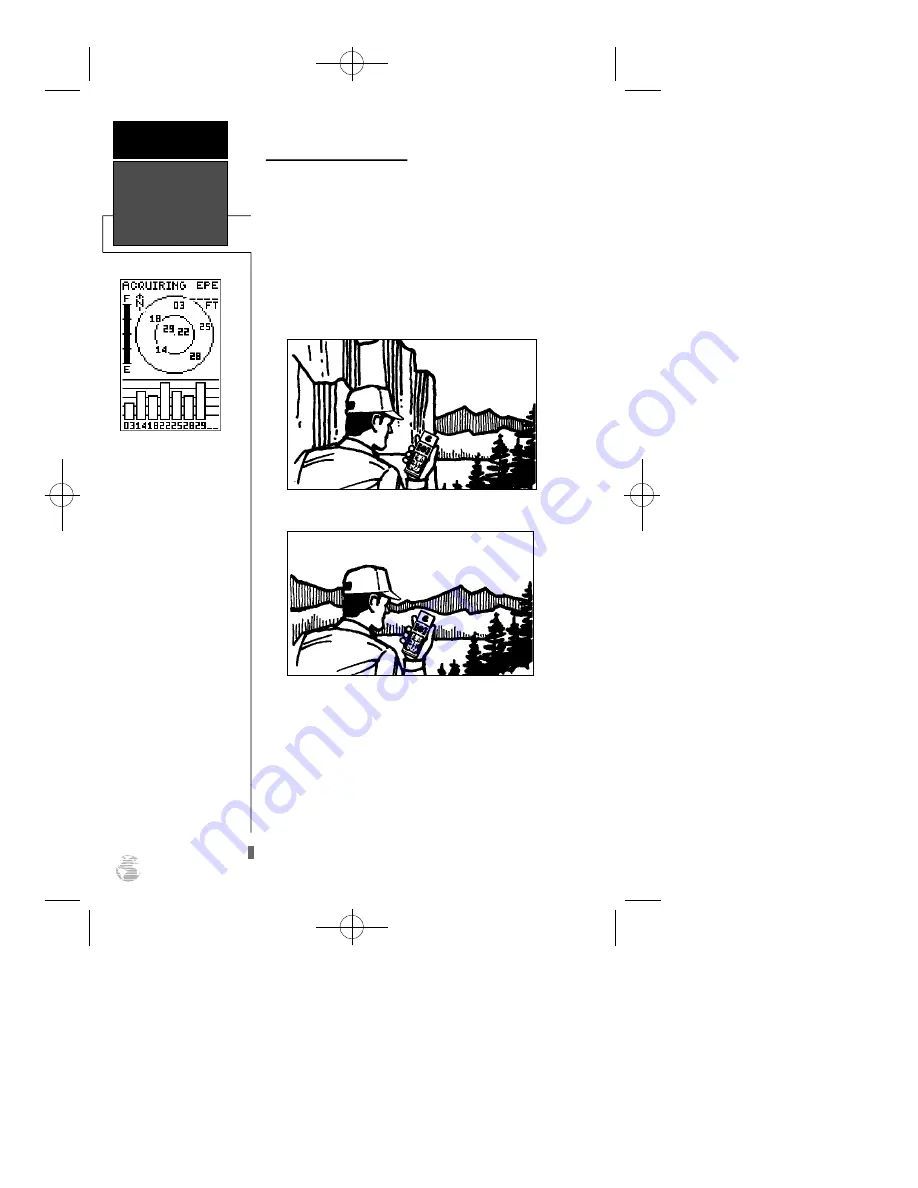
6
Acquiring Satellite Signals
Because the GPS 38 relies on satellite signals to provide
you with navigation guidance, the receiver needs to have an
unobstructed, clear view of the sky for best performance.
What exactly does this mean? In a nutshell, the GPS receiv-
er’s view of the sky will generally determine how fast you
get a position fix, or if you get a fix at all. GPSsignals are
relatively weak, and do not travel through rocks, buildings,
people, mountains and other significant structures, so you
need to make sure that you’re not standing next to a tall
building or a wall of cliffs when acquiring satellites.
Once the GPS has calculated a position fix, you’ll usual-
ly have anywhere from four to eight satellites in view. The
GPS 38 will now continuously select the best satellites in
view to update your position. If some of the satellites in
view get blocked or “shaded”, the receiver can simply use
an alternate satellite to maintain the position fix. Although
a GPS receiver needs four satellites to provide a 3D fix, the
GPS 38 can maintain a 2D fix with only three satellites.
The GPS 38’s Satellite Page
will help you determ i n e
what satellites are in view,
and whether or not any
satellites are being “shad-
ed”, or blocked from the
receiver’s antenna.
By monitoring the signal
strength bars at the bottom
of the page and the north up
sky view, you’ll be able to
see how moving to another
area with a clearer view of
the sky will improve satellite
reception and speed up sig-
nal acquisition.
Obstructed View of the Sky
Clear View of the Sky
G E T T I N G
S TA R T E D
Acquiring
Satellites
GPS 38 Man Rev B 7/23/98 4:31 PM Page 6



















